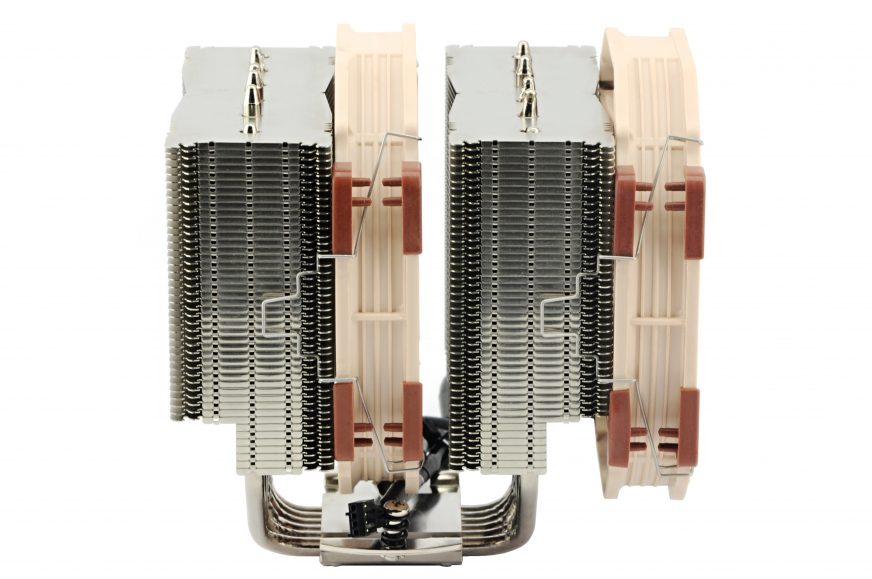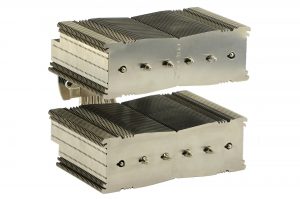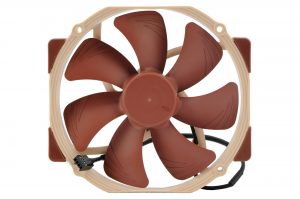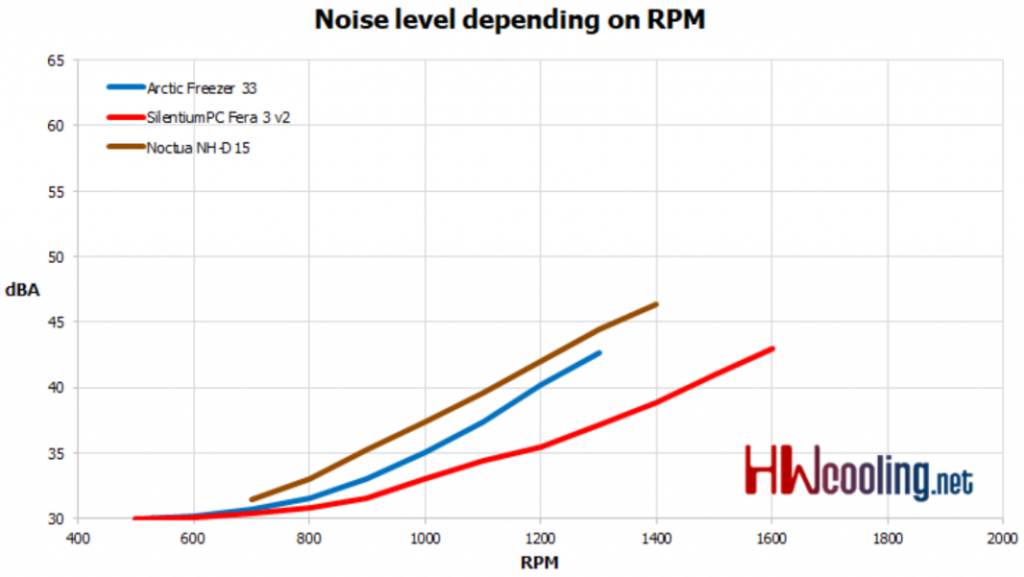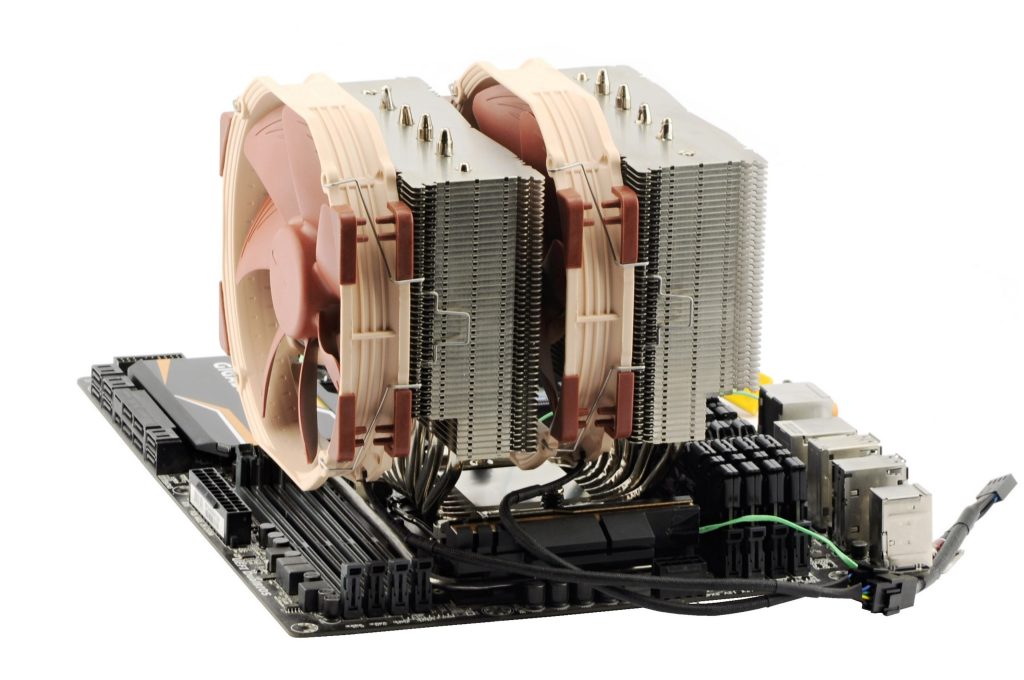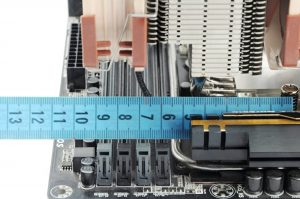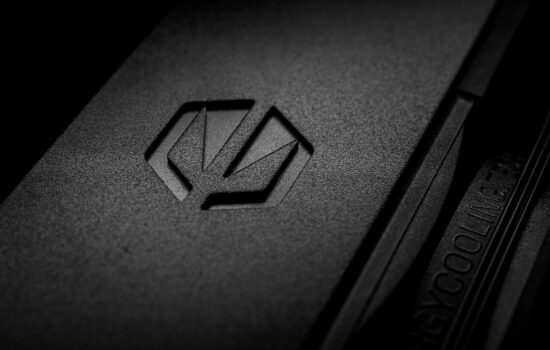Parameters and details
We extended our database of processor coolers with the notorious NH-D15. It will serve as a key reference point for every upcoming test because it represents some kind of a standard for air coolers. In this review, we analyzed the functional features of the most popular product in its category. How does Noctua do it?
Basic parameters
| Parameters | Noctua NH-D15 | |
| Compatible sockets | AMD AM3(+), AM2(+), FMx(+), Intel LGA 115x, 2066, 2011-x | |
| Measurements (H/L/W) fan included | 165 × 161 × 150 mm | |
| Weight of the heatsink, fan included | 972/1312 g | |
| Number and thickness of heatpipes | 6× 6 mm | |
| Thickness (and gaps) of ribs | Ventilátor | 0,4 (1.85) mm |
| From the middle of the base to the edge of the fan (and heatsink)* | 95 (73) mm | |
| Possibly conflicting RAM slots and collision height** | 2 – 4 (34 mm) | |
| Fan | 2× 140 mm | |
| Starting RPM (and voltage) | Minimálne štartovacie | 667 (4.82 V) |
| Max. RPM | Maximálne (12 V) | 1494 |
| Bearings | SSO2 | |
| Approximate price | 85 eur |
*These measures indicate distances between the cooler and RAM slots, or more precisely the nearest PCIe × 16 slot.
**The data reflect the situation on Mini-ITX boards which typically have 50 mm from the center of the socket to the first slot. With the ATX format, it can be up to 7 mm more and that means one extra slot and a wider compatibility than is mentioned in the table. We measured the height limit with fans that are aligned with the maximum specified coolers height.
Details
The heatsink weights almost a kilo and there are not many bigger pieces out there. Its design is excellent. It is solid, it has a nickel-plated finish, and everything is done with precision. All parts fit perfectly together and are finished to the last detail, including edges and brazing. Between the ribs and pipes, the rigid connection is clearly visible round the whole surface, but without any defects. The tracks are perfectly covered also on the base.
The contact area of the base is slightly convex (for a better contact with the IHS) and its structure has small grooves. They provide a better symbiosis with compounds that have higher viscosity. Compared to smooth surfaces, air bubbles are not a problem here. Sure, under the ideal conditions, mirror-polished surfaces are more efficient.
Two NF-A15 fans with various improvements are included. There are really many of those improvements and we do not want to bore you with theorizing about each one of them (we will test them in practice someday, it will be more interesting …). Transferring fan vibrations to the radiator is eliminated by soft rubber pads. And on each of the blades there is a trio of small projections. Their task is to direct the airflow to places where the triangular cuts on the edges of the ribs reduce the resistance of the flowing air. This should maximize the intensity of airflow around places with the most significant heat exchange while maintaining the lowest noise level possible.
Really important are bearings with the magnetic stabilization of the rotor axis. Time has already shown that they are extremely durable and even after years they retain their original properties without producing disturbing sounds. The fan is optimized for PWM operation, and after manual tuning of the curve it can achieve stable 180 rpm. With fixed voltage control, it starts at 667 rpm. This can make more demanding users a bit unsatisfied because the process is louder than very quiet.
The rotor is quite heavy and to make it start moving you need at least 4.8 V. When it is running, however, even 4.35 V is enough to maintain a lower speed (450 rpm with a tolerance of +/- 50). But with such a setting, the speed is overly volatile and the fan obviously suffers.
With dual tower coolers, RAM compatibility is almost always compromised. The only exception in the case of D15 is with Mini-ITX boards, where both DIMM slots fit nicely to a cutout in ribs. It is up to 7 cm high, which exceeds any commonly available module. ATX boards are a bit bigger problem. The slots on them are more shifted from the socket, and the second (and every other) slot can also collide.
At least you can use all slots for 32-millimeter modules with the specified heatsink height (165 mm). To use higher modules, you can, of course, attach the fan a bit higher, but that can mean a collision with a side of your case.
It is tight everywhere, even near the graphics card. The first slot on our motherboard (Gigabyte X99-UD4) was blocked. However, it is relatively close to the center of the socket –75 mm. It is two centimetres more on most of other boards. But even so, the access to the lock of the slot can be very difficult. The complicated (dis)assembly of graphics cards is resolved by D15S which has the base out of the axis of the first PCIe (the ribbing is further away). But this package includes only one fan.
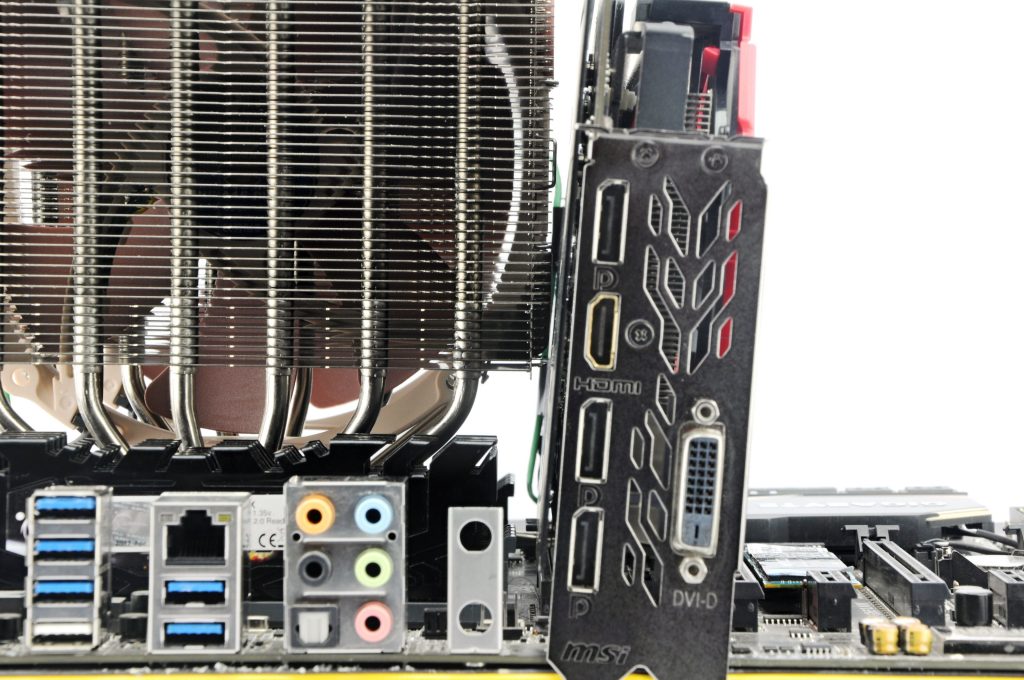
- Contents
- Parameters and details
- Test procedures
- Automatic regulation
- Max. RPM
- 45 and 42 dBA
- 39 and 36 dBA
- 33 and 31 dBA
- Conclusion





